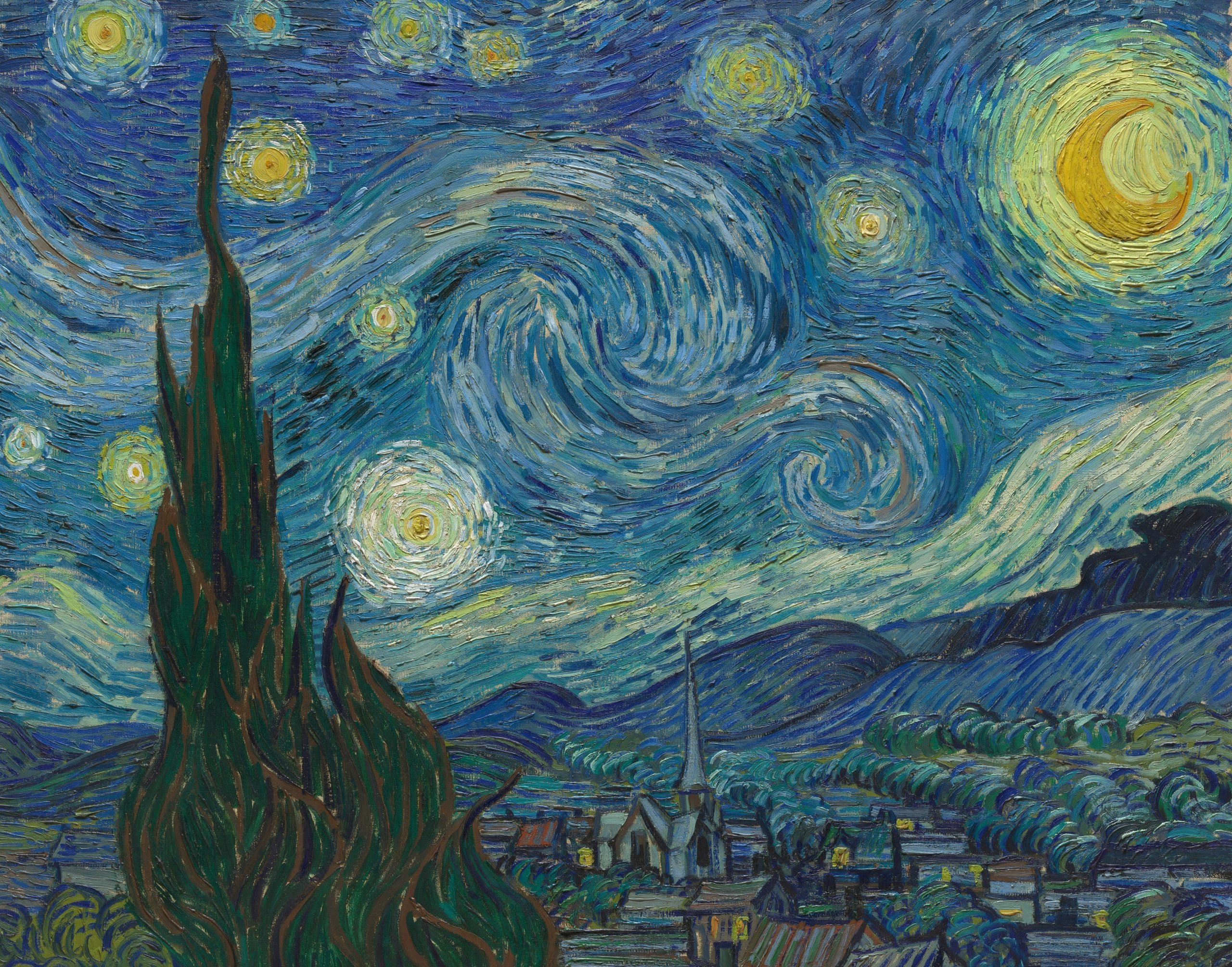
In his swirling 1889 masterwork, The Starry Night, Vincent van Gogh took certain artistic liberties. The quaint valley village is imaginary and the brilliant crescent moon was actually in waning gibbous. Fair enough, it was, after all, painted during the day from Van Gogh’s windowless studio at the Saint-Paul-de-Mausole asylum.
When it comes to depicting the physics affecting the sky’s cloud and air movement, however, Van Gogh is remarkably accurate. This is the conclusion of researchers who have thoroughly examined The Starry Night’s atmospheric dynamics and found that the artist had an “innate sense of how to capture the dynamism of the sky.”
Working from a high-resolution digital image of the painting in the Museum of Modern Art’s collection, scientists specializing in marine sciences and fluid dynamics focused on the bold lines of Van Gogh’s brushstrokes and compared them to the laws of physics. The results were published in Physics of Fluids on September 17.
The researchers measured the relative scale and spacing of the painting’s whirling brush strokes. Photo courtesy Yinxiang Ma.
First, they identified The Starry Night’s 14 main whirling shapes, the churns of whites, blues, and yellows that wrap around stars, the sky, and the moon. Next, they measured the scale and spacing of the brush strokes within these shapes as well as the brightness of the varying paint colors.
The proportions and spacing of the brushstrokes stood in for the shape, energy, and scale of atmospheric characteristics, similar to “leaves swirling in a funnel of wind,” the authors wrote. Brushstroke brightness stood in for the kinetic energy of movement. These properties were then compare when cascading energy theory, which details how kinetic energy moves from large to small turbulent flows in the atmosphere.
The paper concluded that overall the painting aligns with Kolmogorov’s theory of turbulence, which predicts atmospheric movement and scale based on the amount of energy involved. The paper was, lead author Yongxiang Huang said, somewhat in response to previous studies on The Starry Night. The first in 2006 had caught his attention as a PhD candidate and claimed the work showed perfect turbulence. A further two in 2019 and 2020 questioned the finding. This latest study somewhat closes the case.
“What we found for The Starry Night is remarkable,” Huang said via email. “It is exactly following the physical law that was discovered [by Kolmogorov in 1941] more than 80 years ago.”
Where did van Gogh’s precise representation of turbulence come from? Possibly “from studying the movement of clouds and the atmosphere,” Huang said. Though he may have simply had an “innate sense of how to capture the dynamism of the sky.”
It is far from the first scientific study to have been conducted on The Starry Night. Previous studies have compared the painting’s turbulent properties to molecular clouds that form stars and how Van Gogh used color theory (and newly available paints late 1800s) to create a perception of flickering in the brain.